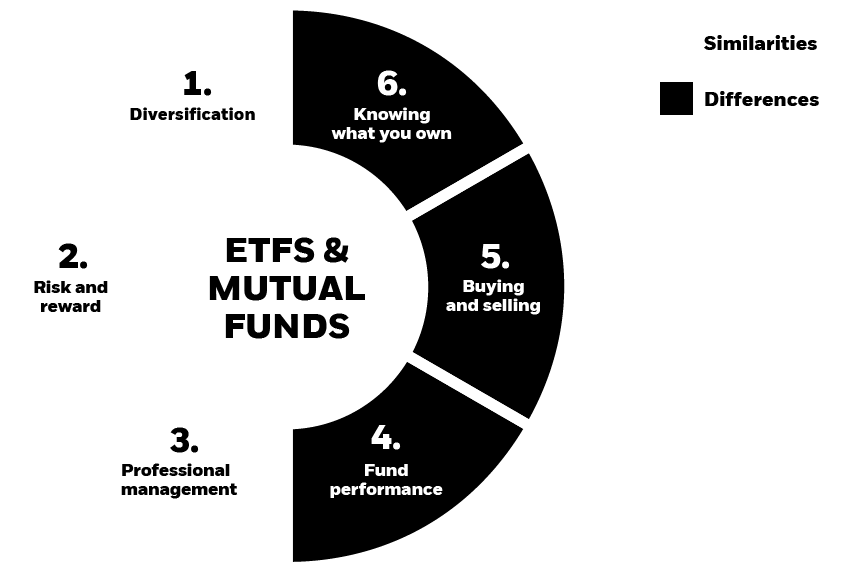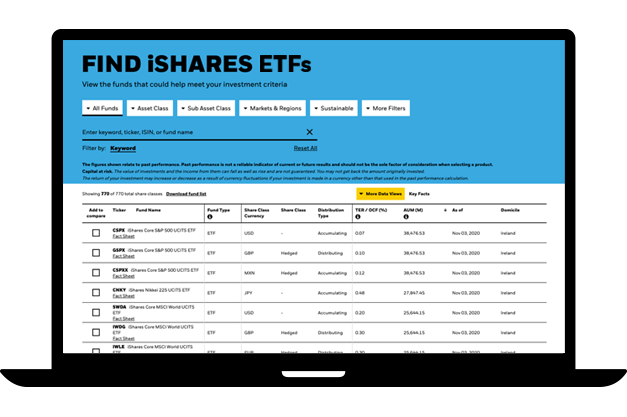
ETFs EXPLAINED
Exchange Traded Funds (ETFs) are an easy-to-use, low cost way to invest your money. An ETF can provide you with access to a diversified portfolio of stocks or bonds in a single investment that trades just like a stock.

Many investors are familiar with mutual funds. How are ETFs similar? And what makes them different?

Diversification
You get a diversified collection of stocks and/or bonds, which can potentially help reduce risk compared to individual securities.
Risk and reward
The risk profile of an ETF is derived from its underlying holdings, as with mutual funds.
Professional management
The funds are overseen by professional managers.
Fund performance
Most ETFs seek to closely match the performance of an established stock or bond index, such as the S&P 500 or the TSX. Actively managed mutual funds try to beat the index, which can be hard to do, especially after fees and taxes.
Buying and selling
As with stocks, you can buy and sell ETFs at the market price whenever the market is open. Mutual fund shares are purchased directly from the fund at Net Asset Value and priced once a day after the market closes.
Knowing what you own
Because ETFs usually aim to track an index, their holdings change relatively little over time – without the “style drift” that may surprise mutual fund investors.
WHAT ARE THE BENEFITS OF iSHARES ETFs?
Transparency
ETFs are traded on stock exchanges, which allows for price transparency throughout the day, so you always know what your investment is worth.
Low Cost
iShares ETFs are low cost, averaging 0.21% in annual management fee. The savings an investor can achieve from lower fees can be significant over time1.
Diversify
iShares ETFs make it easy to invest in a wide array of markets, from broad equity and bond markets, to niche sectors. The underlying holdings are disclosed daily, so that you always know what you own.

DISCOVER OUR PRODUCTS
Explore our offerings to find ETFs that fit your investment strategy.
